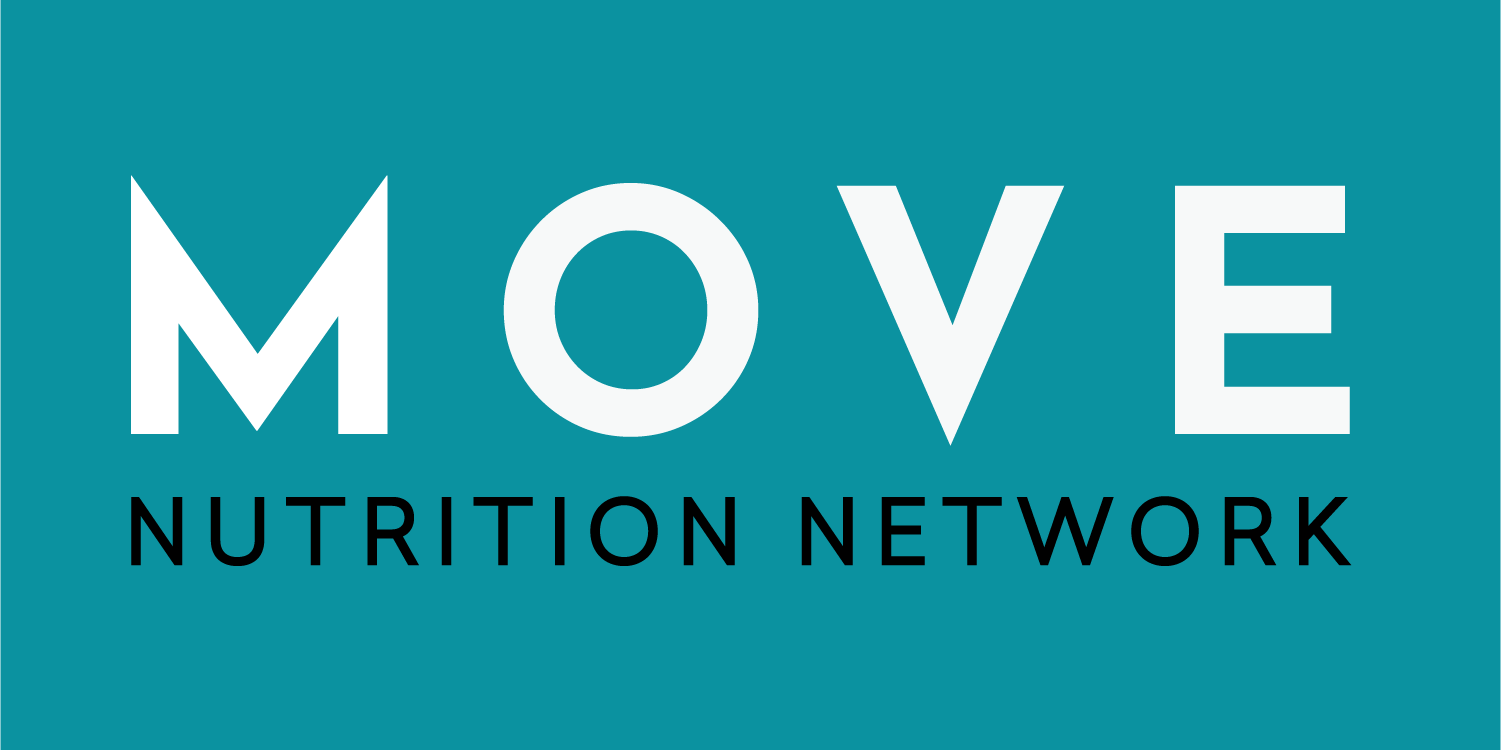
Lifting The Bar for Women in Sports Nutrition
by Elyse Lovett, MS, MBA
Editor, Move Nutrition Network

The Evolution of Sports Nutrition
The term “sports nutrition” has been around for decades. With the emergence of exercise physiology labs in the ‘70s and increased research on carbohydrates and proteins for sports performance, the connection between nutrition and physical activity became more widely recognized. At the same time, the sport of bodybuilding took off and sports nutrition products hit the marketplace. As sports nutrition grew into today’s multibillion dollar sports and active nutrition industry, product research and marketing have shared a common focus: males.
Women in Sports Nutrition Research: From the Experts
While the industry has largely focused elsewhere, the state of sports and active nutrition research on behalf of women is slowly evolving. Let’s take a deeper dive into the research, how it has changed, the challenges faced by the industry, and what the future may hold.
To gain perspective on the current state of sports and active nutrition for women, we turned to four experts in the area, all who happen to be women with some impressive credentials.

Dr. Sue Kleiner, PHD, RD, FACN, CNS, FISSN
Owner of High Performance Nutrition, LLC

Karen Todd, RD, MDA
VP of Global Brand Marketing, Kyowa Hakko USA

Katie Emerson, RD, MS, LDN
Manager of Scientific Affairs, Nutiriton21

Amy Kosowski, MS, LDN
Senior Nutritionist & Label Compliance Manager
NOW Health Group
Karen Todd: “The research on women in sports nutrition is still underrepresented. A recent study published in 2021 reviewed six sports nutrition journals for the ration of studies between males and females. They found that 63% of publications included both males and females, 31% included only males, and 6% included only females. Addressing this gap in female only studies should be a focus for additional research.” Todd went on to explain, “the United States is the largest sports nutrition market by far and although more studies on women are underway, we are still lacking.”
As an instrumental part of the WIN (Women in Nutraceuticals) leadership team, Karen explained “it is not only research that is lacking, the number of CEOs and women on corporate leadership teams that are female is also low, 5% and 19.2% respectively. There are multiple positive impacts when more women are in leadership positions, from driving innovation, ROI, employee retention and even the way the public views a company compared to those that are predominately male.”
Among 6 sports nutrition journals, only 6% included female exclusive studies
Dr. Kleiner: Importantly there is a conversation, like this one, about the need for more female-centric research and collecting more data on females at all stages of life. Probably the most prominent change in the past ten years is focus on the female reproductive system during their lifetime and how it impacts everything, including athletic performance. We are talking about and investigating menstruation, contraception, menopause, and all the variations in between, and the impact on energy, nutritional needs, health, performance, training, and recovery. There are challenges to getting this research funded and accomplished because the changes in methodological strategies required to accommodate the female reproductive system can add complexity, time, and cost to a study. It is taking time to adjust to the fact that studying males is not the “normal” status and studying females not the “abnormal” status. In fact, research institutions, funding agencies, scientific publishers and reviewers are more apt to require that female subjects be included in studies unless there is a valid reason to exclude them. This is an innovative systemic change that will have lasting impacts.
Dr. Kleiner goes on to explain what is important when it comes to research methodologies for women. The recommendation is that in all studies, the reproductive system must be considered as part of the structure of the study design. This is an essential part of research design, otherwise outcomes may be compromised and not predictive of real-world experiences.
studying males is not the “normal” status and studying females not the “abnormal” status
Amy Kosowski: Kosowki agrees with Dr. Kleiner’s methodological strategies required to accommodate females and brings some interesting statistics to light. A 2022 meta-analysis[i] examining trials conducted since 1975 in sports science found that >99% of athlete research methodology disregarded important aspects of female physiology. This is because it has been thought that women are more complicated as experimental subjects due to hormonal fluctuations and other physiological difference.
Studies involving female subjects must account for menstrual status and sex-based responses to nutrition and exercise. Some important characters to consider are difference in physiological size, hormones, microbiome status, and nutrient status. Women are also psychologically different than men, and women’s fitness goals tend to vary more greatly than men.
lack of research…has compromised the quality of health information available to women as well as the health care they receive. [ii]
Are Women Creating the Demand?
If we focus on the research aspect of sports nutrition, there is a clear lack of exercise and sports nutrition clinical studies exclusively on female athletes and the general population. Scott Dicker, Market Insights Director of SPINS, LLC explains, “While there has been a lot of talk around the importance of including more research and products for women in sports nutrition over the past decade, I believe the industry has not followed through to the extent which would benefit female athletes and women who are interested in being active in general.” This could be the issue for product developers looking to develop products with ingredients studied specifically in females – the research is just not there. The outlook could be more positive though according to Dicker, “we are, however, beginning to scratch the surface, which is a nice first step. We see women over indexing in performance nutrition products, showing the desire and potential for the category to really get to levels never seen before by increasing the supply where the demand clearly is.”
Over the past few years, we have seen the active nutrition category explode, and female sports nutrition influencers are creating a lot of noise in the category. Regarding women athletes and active nutrition users, the benefits women are seeking are around performance and recovery and that is where the data is lacking. According to Dr. Kleiner “when it comes to athletic performance, injury prevention and repair, and recovery, historically only 2-3% of the subjects are female.” Emerson explains further, “with women being underrepresented within sports and exercise science research, it remains unclear on whether data applies to women, men, or both. While we have seen some progress over the past decade, the representation of women from diverse backgrounds is still needed to make sure research findings can be translated to all people.” An important aspect as we watch this category grow and companies innovate to meet the demands over the next couple of years.

Scott Dicker
Market Insights Director, SPINS
Supplement Trend: Where’s the Innovation?
Included in the multibillion-dollar sports nutrition industry are dietary supplements, functional foods and beverages. More than ever, consumers are filling in their nutritional gaps with nutraceuticals geared toward a healthy lifestyle. When it comes to sports nutrition, benefits range in the areas of performance, recovery, mental edge, and energy needs. Looking at the shelves in both mass and specialty stores, we are still seeing over 90% dominance toward male driven products.
While overall innovation is lacking and users continue to look for female-focused products in an untapped sports nutrition market, bright spots are beginning to emerge. Todd explains, “gone are the days of pink packaging, manufacturers are starting to adjust their formulations to focus on the specific needs of women.” Kowoski agrees with the concept of adjusting formulation and explains, “formulators are addressing the different nutrient needs of women, as well as female-specific benefit expectations. Retailers are also starting to make room for this underserved demographic by offering women-focused brands in stores.”
Attitudes among consumers are also beginning to change. Most women are not afraid of protein anymore or “bulking up”, and products in the space are no longer just for athletes. The active nutrition user is searching the shelves to meet their personalized goals. As the active nutrition category becomes even more predominant in the supplement realm, new trends adopted by other categories are coming to light in sports and active nutrition. Kosowski explains, “clean label and plant-based ingredients are in higher demand. Protein remains a top in-demand nutrient for sports nutrition products and is prominently featured in ready-to-drink beverages, powders, and bars for sports nutrition.” Dicker agrees, and has his own predictions for what is to come explaining, “protein used to be avoided by women for fear of becoming bulky. Now we see protein targeting all different age groups and women as well. The same can be said for many other performance nutrition products. I believe the next example will be creatine, which has also been almost exclusively marketing towards men until very recently.”
Prediction:
creatine will be the next ingredient to break through to an expanded active nutrition audience, including women.
scott dicker, spins
Summary and Final Thoughts
We have come a tremendous way from bodybuilding as the main focus in sports nutrition. Influencers spotlighting and educating the general population on science-based ingredients; athletes understanding the benefits of fueling their bodies with the right calories; and manufacturers changing the way they formulate to cater to new active nutrition groups are all creating demand in the space. Although we have come a long way, we are not done making noise and evolving the space. The untapped research and formulation opportunities focused on women in sports and active nutrition will be an important area to watch grow in the next few years. As practitioners in the space work with female clients on nutrition and fitness goals, there is an opportunity to educate on the personalized aspects of nutrition for females. Finally, if brands are not already innovating in the category or including women in research studies, it is time to lift the male-centric sports nutrition weight and realize women are holding on too.
[i] Smith ES, McKay AKA, Kuikman M, Ackerman KE, Harris R, Elliott-Sale, KJ, Stellingwerff T, Burke LM. Auditing the Representation of Female Status Versus Male Athletics in Sports Science and Sports Medicine Research: Evidence-Based Performance Supplements. Nutrients. 2022; 14(5): 953 [ii] Institute of Medicine (US) Committee of Women’s Health Research. Women’s Health Research: Progress, Pitfalls, and Promise. Washington (DC): National Academies Press (US); 2010
Subscribe for additional Move Nutrition Quarterly content like research updates, market insights, and more.
